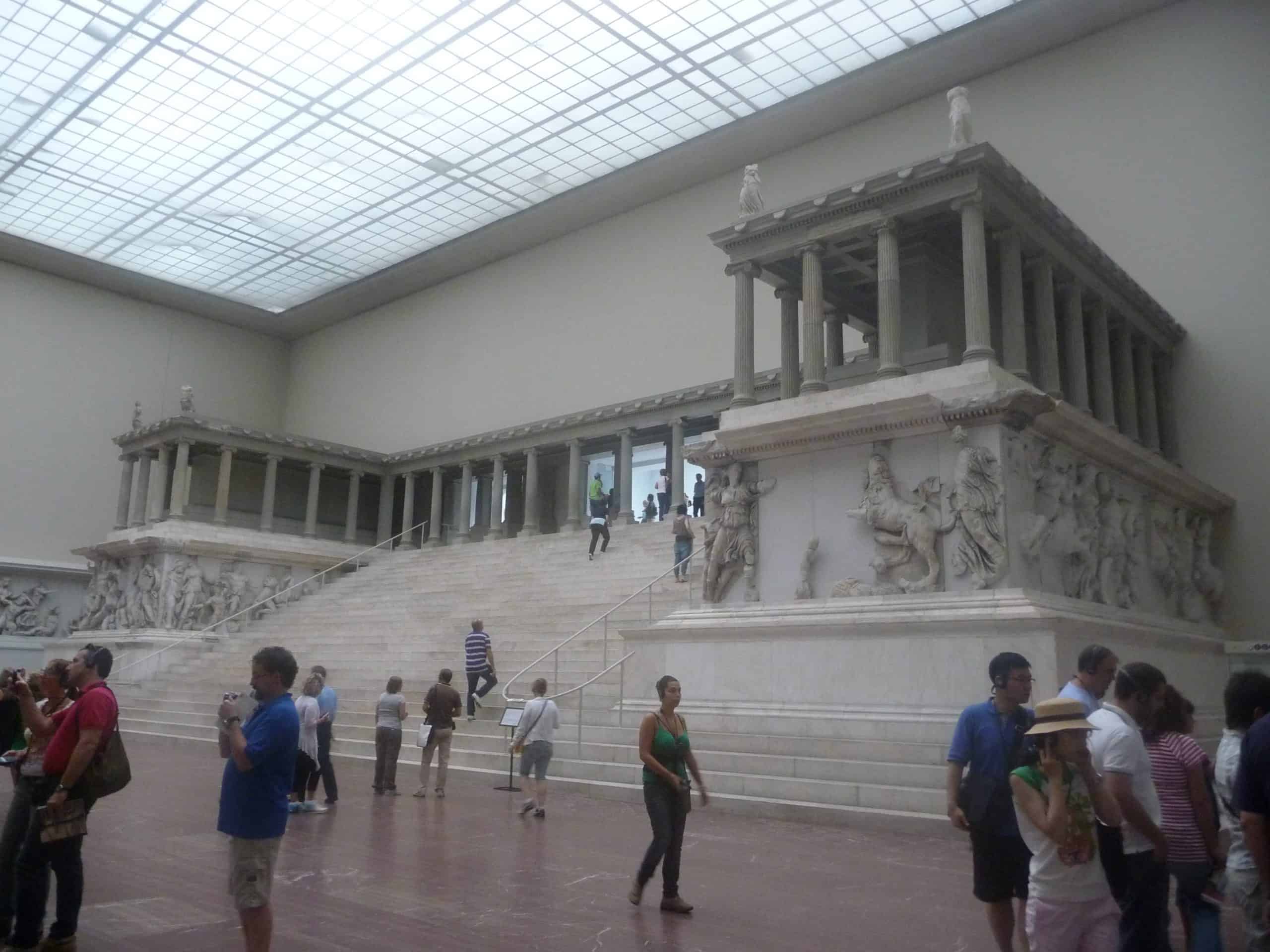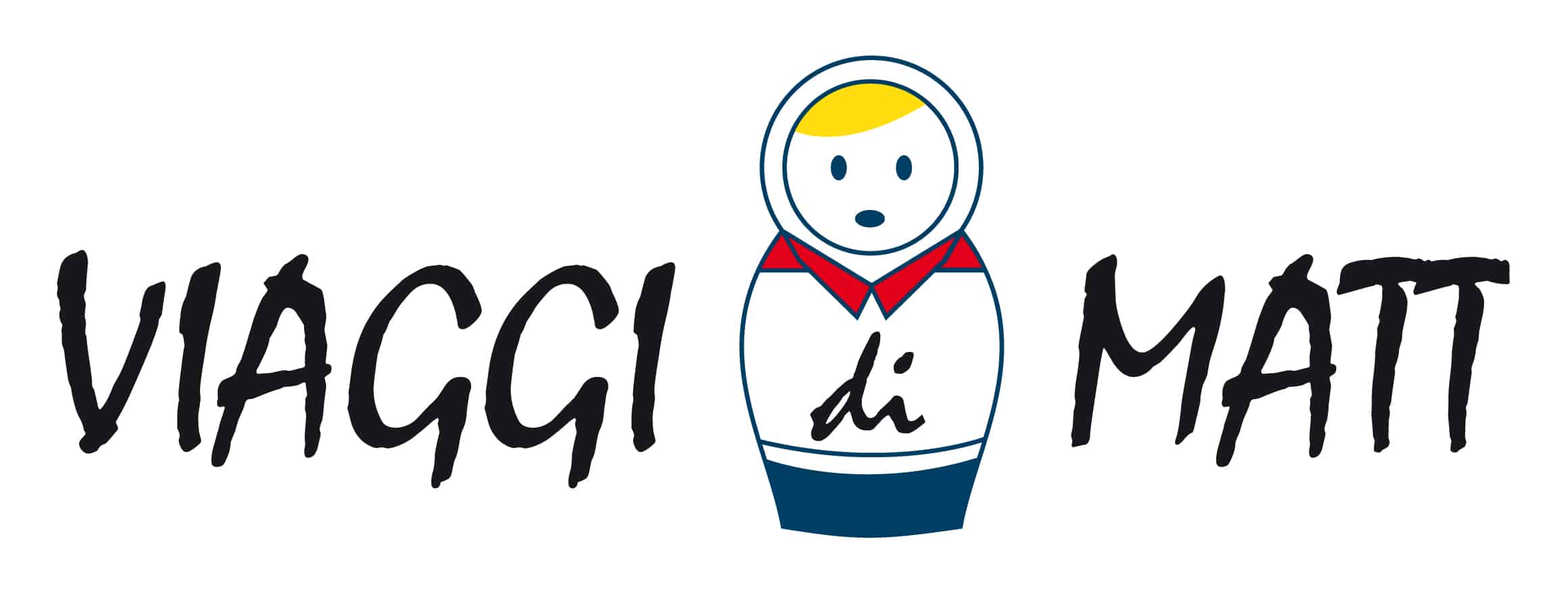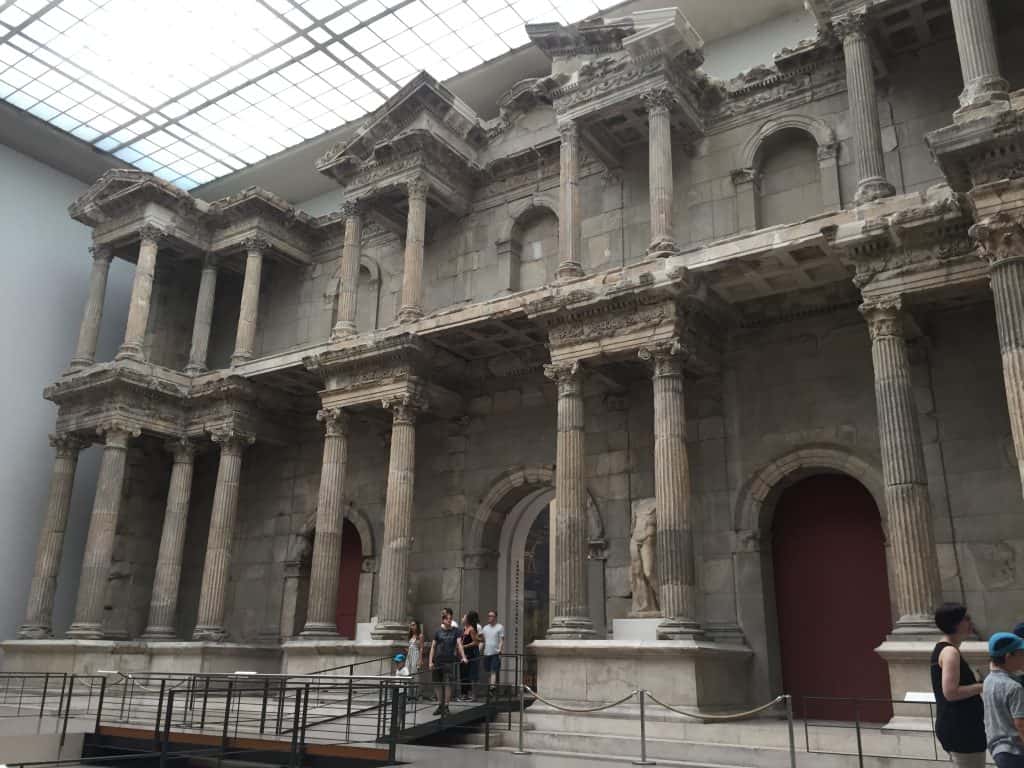
The Pergamon Museum, or Pergamonmuseum, is located on Berlin’s Museum Island and was built from 1910 to 1930.
The Pergamon Museum was severely damaged during the air attack on Berlin at the end of World War II. Many of the exhibits were kept in safe places and some of the large pieces were walled up to ensure their protection. In 1945 the Red Army took possession of a large part of the museum’s collection and in order to prevent any theft or looting, many works were transferred to Russia.
Museum is divided into ancient collection, Near East and Islamic art and is visited by over a million people every year, making it the most visited art museum in Germany, as well as being one of the largest.
The ancient collection of the Pergamon Museum was greatly expanded with the excavations of Olympia, Pergamon, Miletus and Cyprus. Collection contains greek and Roman works of art, sculptures, inscriptions, mosaics, bronzes, jewelry and ceramics. Absolute stars of this collection are the Pergamon Altar (a long sculptural frieze depicting the struggle between gods and giants) and the Market Gate of Miletus, coming from the ancient city of Miletus on the coasts of today’s Turkey.
In the wing of the museum called the Museum of the Near East there are objects of Assyrian, Sumerian and Babylonian culture. The most beautiful pieces are the Ishtar Gate, the procession road of Babylon and the throne room of King Nabuchodonosor II.
Main works of the Islamic art section are the façade of Mshatta (coming from an unfinished Islamic palace located in Jordan) and the Aleppo room (reception room of a mediator of Aleppo during the Ottoman period).

















